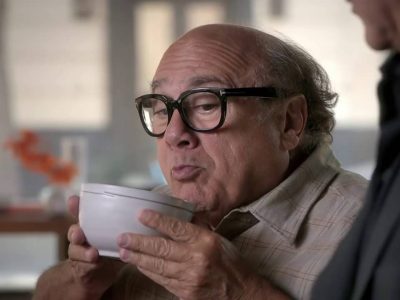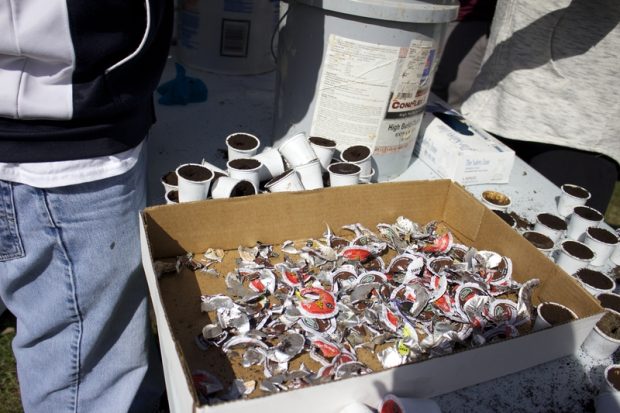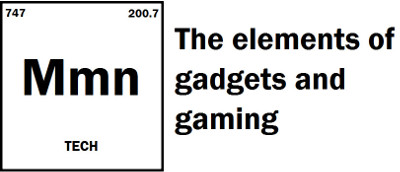

Why single serve coffee is the dumbest kitchen gadget ever
Single serve coffee machines are the kitchen gadget of choice for lazy java aficionados everywhere. You get a steaming hot beverage in just seconds, and there’s literally hundreds of different varieties to choose from. They’re also the stupidest kitchen gadget you can find outside of a late night infomercial.
They make terrible coffee, and ever worse tea
We have a Keurig in our office. It only gets regularly used by one person, who swears by how delicious it is. The rest of us can’t stand the thing. It produces this weak, slightly burnt and stale tasting coffee. Most of us either use the drip machine or get it from Tim Hortons.
The problem lies in just how these single serve dealies work. They’re much faster than a drip maker, but use lower pressures than a proper espresso machine. So the water doesn’t really have a chance to pick up the flavour of the coffee. Hence why Keurigs have that characteristic “off” taste compared to other brewing methods.
When it comes to teas, the water simply doesn’t get hot enough (it should be boiling for black tea), nor does it steep long enough. The end result is an awful swill that tastes more like a wet gym sock than a proper cuppa.
Many companies “cheat” to get around this limitations by pumping their brews full of sweeteners and other flavourings. You’ll find enough sugar can make anything taste halfway palatable. The reality though is that almost any other brewing method is going to result in a better tasting cup.
They’re ridiculously expensive to operate
Aside from the general poor quality of the beverages, single serve machines are also ludicrously expensive to operate.
Let’s look at the teas for example.
A 12 pack of Red Rose K-Cup tea from Walmart Canada runs about $8.97. Thus a single cup costs 75 cents to make. A large box of 216 Red Rose tea bags costs $9.42, or 4 cents each assuming you’re just making one cup. These tea bags will do a four cup pot. Two cups if you like it strong. In other words, you could make up to 75 cups of tea before equaling the price of a single serve K-Cup. That’s a lot of tea!
Then I went hunting. I was able to determine that a single teaspoon of loose leaf tea runs 2 grams, which is enough for one cup. Those fancy loose leaf teas are usually sold in 50 gram bags. So each bag will get you 25 cups worth, give or take.
At David’s Tea, a chain tea shop here in Canada, I’m quite fond of their Nepal Black, which I don’t get very often because of its price. It’s $12.98 for 50 grams. Based on our math, that’s 52 cents per cup. Still less than our K-Cup. In fact, out of the hundred plus premium teas David’s sells, maybe only 10 of their ultra-premium varieties are more expensive than our Red Rose K-cup. For the non-Canadians out there, Red Rose is a mass market bargain brand that’s equivalent to Tetley’s.
The figures are similar with coffee, with only the most expensive beans rivaling the per cup costs of K-Cups. Meaning you’re paying luxury prices for the same swill the company is giving away free at the cafeteria. If you’re spending that much, you’re better off having someone make your brew for you.
They’re terrible for the environment
Most single use coffee pods are made from a mix of plastic, fabric, and coffee grounds. They’re incredibly difficult to take apart and recycle. Some newer pods do allow you separate the fabric filter/bean mesh from the plastic pod for recycling. Though that’s predicated on the notion that someone too lazy to make a proper pot will actually take the time to pull them apart. Nor will they be arsed to use the refillable pods. Which means most inevitably end up in the landfill.
It’s such an environmental disaster that the Keurig’s inventor John Sylvan doesn’t use them, and regrets creating it. Some coffee roasters have taken the initiative to make their pods fully biodegradable. However, they are few and far between.
Now consider a standard drip maker, where the beans and paper filter are both fully biodegradable. Additionally, many office instant coffee machines now use metal mesh filters and grind the beans fresh for each cup. Only the used beans are thrown away. Making them a far cleaner alternative for big companies.
They have the gall to use DRM
Keurig’s 2.0 brewing system uses a form of DRM to keep you from committing the unforgivable sin of using non-approved coffee in your machine. Essentially taking the worst aspect of the printing industry and applying it to your morning cup of Joe.
The system uses a sensor that scans each pod for a special ink layer. If it doesn’t see it, it’ll reject the pod. Fortunately, it is fairly easy to defeat with with a plastic insert. Though the fact though that this would even be included on a kitchen appliance makes them simply one of the stupidest gadgets ever.
Image via Penn State Brandywine
